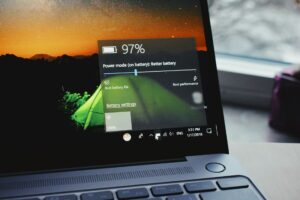Updated for 2025: The Definitive Windows Shortcut Key Reference

Updated for 2025: The Definitive Windows Shortcut Key Reference
Introduction: The Importance of Keyboard Shortcuts in the Modern Era
Mastering Windows keyboard shortcuts is a simple approach to become more productive in today’s fast-paced digital environment. Using shortcuts may greatly save wasted time, whether you’re managing files, editing images, or just surfing the internet. In 2025, there are more efficient methods than ever before to operate your system from the keyboard, thanks to the new shortcuts introduced with each edition of Windows.
Simplify Copying, Pasting, and Editing
Copying and pasting, closing and reopening windows, and switching between applications are all quite repetitious operations, as anybody who uses these tools often will attest. Keyboard shortcuts, however, transform such laborious operations into simple instructions. Instead of using the right mouse button to copy and paste, you may quickly do the same task by hitting Ctrl + C and Ctrl + V, respectively. With little experience, using Ctrl + Z to undo and Ctrl + Y to redo becomes automatic.
Changing Between Desktop Views and Apps
Shortcuts also work well for navigating between your active programs. To swiftly navigate between applications, use Alt + Tab instead of dragging your mouse to the taskbar. Need to go back to the main desktop so you can locate a folder or file? When you press Windows + D, the screen becomes completely clean. To restore your previous state, just hit the shortcut key again when you have finished.
Effortless File and Folder Management
Those who use File Explorer often will find the shortcuts a godsend. Pressing Windows + E to open the file explorer, F2 to rename a file, or Ctrl + Shift + N to create a new folder all save a few clicks. When working with hundreds of files simultaneously, even seemingly little conveniences like these may make a big difference.
Efficiently Handle Multiple Windows at Once
Several keyboard shortcuts are available in Windows for the purpose of multitasking as well. It will be useful to understand how to manage your windows without moving them about in 2025, when capabilities like virtual desktops and Snap Layouts become more widespread. A window may be “snapped” to the side or corner of the screen by pressing the Windows key plus the arrow keys. When comparing data or dealing with several papers, this is the way to go. If you’re using Windows to multitask, you can open a new virtual desktop with Windows + Ctrl + D, and then move between them using Windows + Ctrl + the left or right arrow keys.
Managing Preferences and Core System Operations
Using the keyboard to access system settings and diagnostics is much quicker than navigating menus. The Settings menu may be accessed by pressing Windows + I, the Run dialog box by pressing Windows + R, and the Power User Menu by pressing Windows + X. Pressing Ctrl + Shift + Esc immediately opens the Task Manager, where you may monitor your PC’s performance or close apps that aren’t responding.
A Journey Through Windows 11 and Beyond: Discovering New Shortcuts
With the latest upgrades that brought improved system operations and AI features, there are now new shortcuts. One example is the enhanced accuracy of voice typing, which may be activated instantly by pressing Windows + H. Whether you’re streaming or gaming, pressing Windows + G brings up the Xbox Game Bar, where you can easily record screen activity or monitor your performance.
Advanced Tools for Clipboard and Emojis
Another tool that is underappreciated despite its significance is the clipboard history. You can access your whole clipboard, not just the most recent thing you copied, and paste from it by hitting Windows + V. Writers, students, programmers, and anyone else who has to keep track of a lot of different sources of information will find this very helpful. To add some personality and flair to your communications, you can also use the Windows key plus the period (.) sign to insert emojis or symbols.
Media Shortcuts and Enhanced Productivity
Even more advanced technological features, such as mirroring your screen to another display, restarting your graphics card driver in the event of a freeze, or connecting to wireless devices like Bluetooth or casting, may be navigated using shortcut keys. Making things easier for users so they can concentrate on what’s really important is the main goal. Additional features that improve the experience include media shortcuts on some keyboards, which allow you to control the volume or skip music.
Advice on How to Acquire and Recall Shortcuts
Many people resist using shortcuts because they are afraid they will forget them; nevertheless, this worry need not be crippling. Begin with a little endeavor. Learn the shortcuts for copying, pasting, undoing, and switching windows; you’ll be using them often. Move on to the more complex commands when you’ve mastered them. They will become automatic with practice. Classify them according to their purpose; for example, start with shortcuts for file management, then go on to multitasking, system settings, etc.
Final Thoughts: Master Your Efficiency
To power users, shortcuts are about much more than techniques. They’re useful tools that can make your life easier by cutting down on mouse use, giving you greater control over your computer, and saving you hours of work per week. With digital workplaces becoming busier and more demanding than ever before, it’s important understanding everything that will increase speed and decrease bother.
Because of this, these shortcuts will revolutionize your PC experience, regardless of whether you’re an online student navigating your courses, a remote worker coordinating your schedule, or a media editor. If you begin by using even a small number of them, you will quickly become proficient in using your system.




